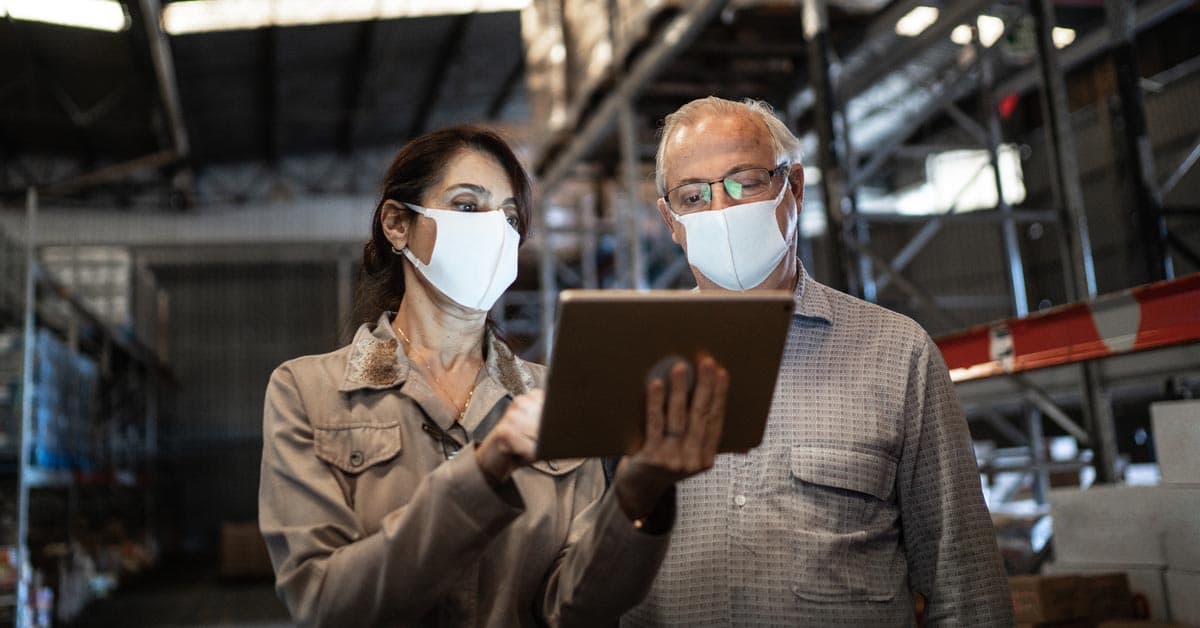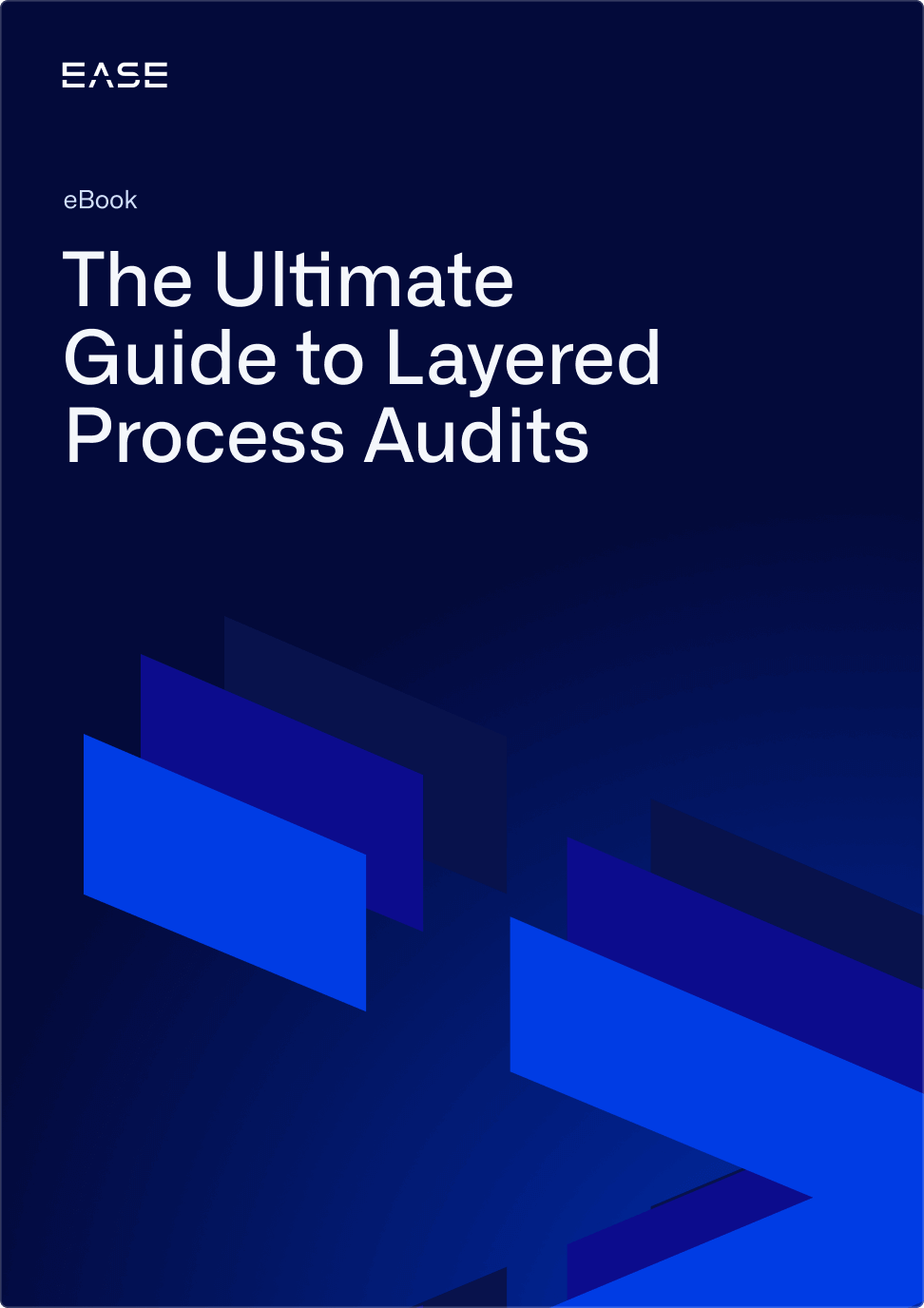How to Adjust Plant Floor Audits to the New Normal in 2021

If there’s anything that can be said for certain, it’s that the plant floor is a different place than it was a year ago.
Social distancing requirements have forced reorganization of production lines and changes to shift patterns. Remote work is the new norm—with all of its associated challenges and impacts on processes. Workers have been sidelined and people have had to step into new roles, all while companies have had to implement new sanitation, screening and mask protocols.
The good news is that the pent-up demand economists are forecasting could mean big growth for manufacturing, with one caveat:
Taking advantage of this opportunity requires an ability to meet quality, safety and production goals while implementing new plant floor protocols.
Against this backdrop, plant floor audits play a pivotal role in ensuring safety, quality and efficiency. In this post, we’re looking at how to adapt plant floor audits to the new normal in 2021, including what to focus on, how to make audits safer and what it takes to make the most of the coming opportunities.
Practicing COVID-19 Safety
The introduction of COVID-19 vaccines mean the end is in sight, but experts warn that complacency could lead to spiking cases, and even now many countries are returning to lockdown. It may be months before vaccines are widely available, and manufacturers must remain vigilant to prevent the spread of COVID-19 in their plants.
To make COVID-19 safety a daily practice among the workforce, plant floor audits should incorporate COVID-19 safety questions, focusing on items such as:
- Whether workers are maintaining appropriate distancing
- Personal protective equipment (PPE) and correct mask usage
- Verifying sanitation frequency of equipment and shared spaces
- Awareness around COVID-19 safety protocols
Companies who have incorporated COVID-19 questions into audits report that it helps demonstrate that leadership takes employee safety seriously and provides a feedback loop to encourage compliance.
Making Plant Floor Audits and Inspections Safer
Plant floor audits and safety inspections themselves must be adapted to the new normal in order to keep workers safe and prevent virus transmission.
What should audits and inspections look like, when accounting for today’s safety challenges?
For starters, it’s important to make sure that auditors wear sufficient PPE and stay six feet or more away from the workers they audit. Contactless audits are also a possibility, focusing primarily on observation to keep conversation to a minimum.
It’s also critical to sanitize any shared auditing equipment, such as a company-issued tablet. For these companies doing mobile audits, it may make sense to have employees complete audits on their smartphones. For paper-based audits, you’ll want a plastic clipboard that can be sanitized and a fresh pen or pencil provided for each audit (or have auditors bring one).
Being Ready for Pent-Up Demand
IHS Markit predicts strong growth in 2021 as consumers feel more confident about returning to normal life.
The result: after a year of uncertainty and tough economic times, manufacturers may be poised for a big comeback.
The possibility is a double-edged sword, creating opportunity for companies to recoup some of their losses from 2020 while also creating risks. It’s especially true when it comes to introducing new products, which may require added resources even as companies struggle with COVID-related staffing shortages.
Plant floor audits can help bridge the gap, giving manufacturers additional eyes on their processes to both improve yield, quality and efficiency. Verification is also crucial in light of plant floor processes that may have been reconfigured to reduce viral transmission, or employees who may be assigned to new roles or locations. Within this context, manufacturers are using platforms like EASE to generate real-time data from the plant floor, revealing insights that would otherwise not be available without digitized audits.
Solving the Production vs. Quality Conundrum
In the manufacturing world, quality is often framed as a process that stands in the way of meeting production targets. However, the new normal requires a reframing of quality as precisely the key for hitting those targets.
Take, for example, companies that have used layered process audits (LPAs) as a strategy for improving both quality and production levels. LPAs focus on conducting fast, frequent checks of manufacturing process inputs, allowing manufacturers to catch problems before they result in a large number of defects.
Automated LPAs have helped manufacturers proactively address systemic issues that could have led to quality escapes, improving process throughput overall. LPAs save time and help solve the production vs. quality conundrum by:
- Minimizing resources used to fix problems after they have become widespread
- Identifying equipment issues before downtime occurs
- Ensuring more resources are spent on products that can actually be sold (as opposed to becoming internal scrap or customer returns)
- Verifying critical-to-quality items to avoid problems with new products or workers new to a production line
- Helping ensure consistency amid changes such as fewer operators on each line and remote training protocols
All of these are critical to maintaining productivity given that many plants are already running extra shifts due to having to spread workers out on production lines.
Plant floor audits will be more important than ever in 2021 as manufacturers adapt to new safety and production requirements as well as staffing shortages due to COVID-19. Automation has an important part in making audits more efficient and effective, so that companies can take advantages of the new year’s opportunities without risking customer satisfaction or employee health.
